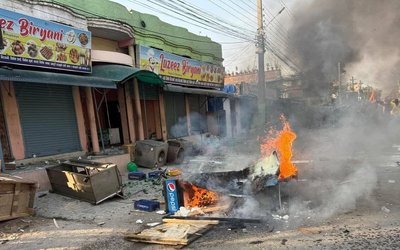More on News





The World Bank today approved a credit of US$ 55 million for the Government of Nepal to scale up its Road Sector Development Program and address post-earthquake reconstruction needs, including the strengthening of the country’s strategic road and bridge network to withstand future seismic and climate vulnerabilities.
The additional financing will top up World Bank support to the Roads Sector Development Project (RSDP) which has been ongoing since 2008. When it began, the project intended to provide residents in 10 beneficiary districts, including the poorest, in the mid-western and far-western regions of Nepal with all-season road connectivity, reduced travel time, and improvements in access to economic centers and social services. With the additional financing, 25 more districts stand to benefit from the maintenance of earthquake-affected bridges. The original 10 district will also continue to benefit from road upgrading, slope stabilization and bridge works.
“The Road Sector Development Project has been the cornerstone of our support to Nepal’s strategic roads network for nearly a decade,” said Takuya Kamata, World Bank Country Manager for Nepal. “While the primary focus has been to develop connectivity in the poorest and remotest regions of the country, the 2015 earthquakes highlighted the need to improve the resilience of key roads and bridges to future natural shocks.”
RSDP currently serves a population of 2 million in 10 districts in the mid-western and far-western regions of Nepal. The project will serve another 10.2 million Nepalis following the maintenance of earthquake affected bridges in the 25 additional districts. The bridges that will undergo maintenance in these districts provide connectivity along the Birgunj-Narayanghat-Mugling-Kathmandu corridor which carries the vast majority of freight into and out of Kathmandu and Pokhara. This corridor is among Nepal’s most vital infrastructure assets for supporting economic growth and development.
“Nepal’s hills and mountains are susceptible to extreme precipitation, earthquake, and landslides that can result in severed connectivity, loss of life, and damage to property,” said Farhad Ahmed, Task Team Leader for the project. “Robust construction, better maintenance and improvements in the capacity to respond will help Nepal adapt to unforeseen events.”





